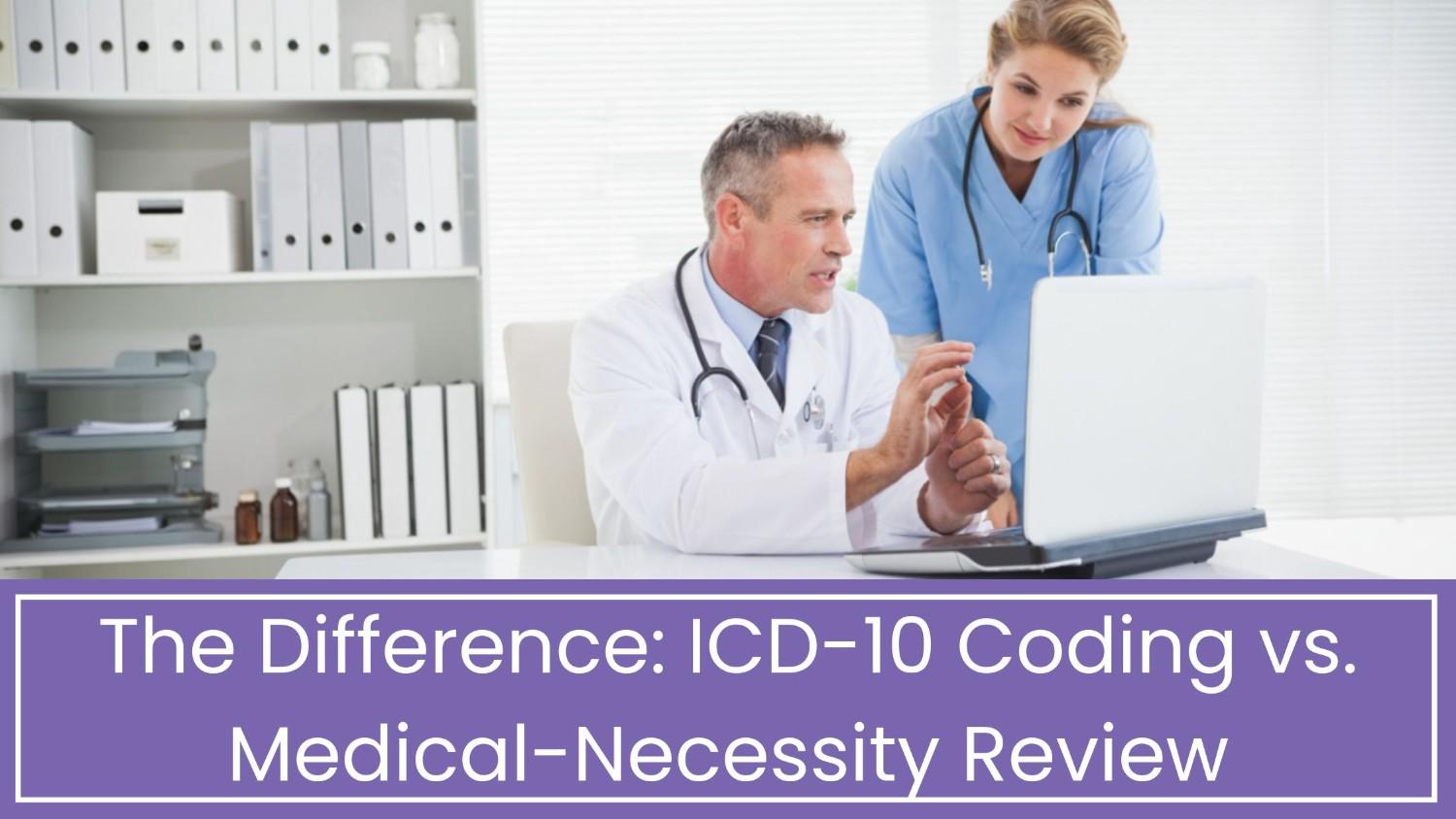ICD-10 vs Payer Audits Ensure Medical Necessity Documentation Every Time
Payer audits aren’t academic — they’re cashflow events. When an insurer questions “medical necessity,” they compare your ICD-10 codes against the story in the medical record. If either side is weak, claims get denied, delayed, or escalated into deeper audits. ICD-10 vs Payer Audits Ensure Medical Necessity Documentation Every Time by building clear documentation habits and creating a coder–clinician workflow that matches payer expectations.
Table of Contents
The Difference: ICD-10 Coding vs. Medical-Necessity Review
ICD-10 is a universal method of recording visits and diagnoses. The official ICD-10-CM directions guide us in the selection and ordering of the codes — for instance, diagnosis which is the main reason for the visit should be mentioned first.
Medical-necessity review is not simply a matter of checking the code. Payers (Medicare included) evaluate whether a service is “reasonable and necessary” for the purpose of diagnosis or treatment considering documentation, clinical standards, and combination of coverage rules. This definition is the foundation of Medicare coverage decisions as well as many private-payer policies. If the medical record does not indicate the reason for the service, it can be disallowed even if the ICD-10 code appears to be justified.
What Auditors Look for (Quick List)
- Clear chief complaint / reason for visit that matches billed diagnosis.
- Objective findings (vitals, exam, test results) that support the diagnosis.
- Clinical decision making notes showing why you chose a test/treatment.
- Contemporaneous entries (dated/timed, signed) — no vague after-the-fact notes.
- Relevant history and prior treatments that justify escalation or procedure.
The Physicians Advocacy Institute’s audit tips emphasize peer review, contemporaneous records, and internal quality checks as core defenses.
Five Practical Documentation Rules that Pass Audits
- Say it plainly, then code it. Write the diagnosis in words (e.g., “acute bacterial sinusitis”) in the note body and then ensure the coder uses the most specific ICD-10 code that matches that wording. Don’t rely on just the problem list or a check-box. (ICD-10 guidelines require the diagnosis to be evident in the medical record.)
- Document the why for every ordered service. If you order a CT, write “CT head to rule out hemorrhage given sudden severe headache, focal deficit noted.” A simple “CT head—acute headache” is weak; linking the clinical concern to the test is strong.
- Use objective data to back subjective complaints. Symptoms alone (e.g., “fatigue”) are often insufficient. Add vitals, exam findings, labs, or imaging that justify the diagnosis or next step.
- Be specific and current. ICD-10 has laterality, episode (initial vs. subsequent), and encounter specifics. Use codes that reflect the current encounter (not historical or “rule-out” states unless that’s how you document). The official ICD-10 guidance explains sequencing and specificity requirements.
- Date, time, and sign. Contemporaneous, signed documentation is far more defensible in audits than retrospective notes or unsigned templates. CMS and payer policies emphasize contemporaneous records in support of reimbursement.
Common Pitfalls to Avoid
- Vague diagnoses: “Infection” or “pain” without location, acuity, or cause.
- Over-reliance on problem lists: Coders need the encounter note to support the billed service.
- Mismatch between code and treatment: e.g., coding for cellulitis but documenting only “redness” without systemic signs or treatment rationale.
- Using “rule-out” or “suspected” as a final diagnosis: If you’re ruling out a condition and you order a definitive treatment or procedure, document why you treated despite uncertainty.
- Not following payer policy: Each payer may have specific prior-authorization or documentation rules (e.g., imaging, DME, procedures). Always check plan rules when using high-risk medical billing services.
Audit-ready documentation: a short template you can use
Put these elements into your typical visit note and you’ll be much better prepared:
- CC / HPI (2–3 lines): Chief complaint + brief timeline (onset, severity, modifiers).
- Objective data: vitals, focused exam, relevant point-of-care tests.
- Assessment: one-line diagnosis (use plain language).
- Medical necessity statement: 1 sentence linking diagnosis → reason for service (e.g., “Given progressive unilateral calf swelling and positive Homan’s sign, ultrasound venous duplex ordered to evaluate for DVT.”)
- Plan & orders: tests, meds, follow-up with indication and expected outcome.
- Signature and date/time.
That single “medical necessity statement” is what auditors want to see — it ties the clinical picture to your decision.
Coding Workflows that Reduce Denials
- Clinician + coder huddle: Quick daily or weekly touchpoints for ambiguous encounters save dozens of downstream denials.
- Charting prompts: Build one-line prompts in your EHR that remind clinicians to add the “why” when ordering high-risk services.
- Internal auditing: Routine peer or coder audits catch patterns (e.g., under-coding, missing laterality) before payers notice. The medical coding Clinic and similar resources are authoritative places to resolve gray areas.
If an Audit Arrives — Immediate Steps
- Stop and stabilize billing for the lines under review (if advised).
- Pull contemporaneous records and assemble a timeline (orders, notes, results). Remember: auditors look for contemporaneous documentation and rationale.
- Engage internal coding and legal/compliance teams early. Peer review (another clinician) can be invaluable.
- Appeal with evidence, not argument. Point to the note sections that show medical necessity, cite payer policy if favorable, and provide any supporting literature or guidelines.
Final Checklist (Printable)
- Diagnosis written in words + specific ICD-10 code assigned.
- One sentence linking diagnosis → test/treatment (medical necessity statement).
- Objective data recorded.
- Contemporaneous signature & timestamp.
- Internal audit/QI process in place and active.
Closing — Make it a Culture Issue Instead of a Task
The use of specific language, a one-sentence justification, and routine interaction between coders and clinicians are small habit changes that lead to passing payer medical-necessity scrutiny. These practices not only safeguard income and lessen rejections but also most importantly make sure that the patient care you delivered is accurately and justly represented. Getting a revenue cycle partner (for instance, Practolytics) can help you establish processes tailored to your specialty and payer mix for more personalized workflows, sample templates, or frequent internal audits.
ALSO READ – Decoding CPT: Your Guide to Codes and Regulations 2024






